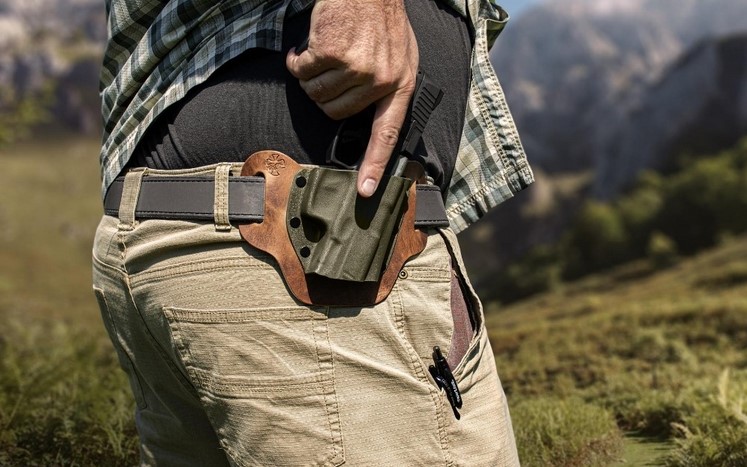
Considering your risk profile is essential before choosing a holster. Your risk profile measures your likelihood of experiencing a lethal force event, which can vary depending on your daily routine. Similarly, it would help if you considered your lifestyle and travel patterns to find the best-concealed carry holster. For example, a small urban business owner who walks to the till daily will need a different holster than a telecommuter who works in his office all day.
IWB Holsters are Better Than Ankle Holsters
There are many differences between an IWB and an ankle holster for concealed carry. One significant advantage of an IWB holster is the ability to adjust its positioning. This is particularly useful for those who carry a backup gun. An ankle holster, on the other hand, has its disadvantages. Whether you use it for everyday carry or concealed carry purposes, you’ll want to choose a design that fits your needs.
If you’re going to use an IWB holster for concealed carry, look for one made with sturdy material. This will protect your gun from impact, and accidental trigger pulls. The concealed weapons holster are excellent for this purpose because they’re made of rigid, durable materials. A soft, flexible material, like foam, will offer less retention and protection against impact and are less suitable for daily use. Additionally, a metal clip is essential for an IWB holster. Please make sure to include this component, as cheap belt clips can make the holster move around and make it more difficult to draw your weapon from its holster.
An IWB holster can be comfortable, safe, and effective, but it may initially feel uncomfortable. Some people even get a rash using an IWB holster, but this could be related to getting used to it. You’ll need to choose the right holster, gun, and matching clothing for maximum comfort.
Kydex Holsters are Better Than Rigid Plastic Holsters.
There are a few advantages to using a Kydex holster over a rigid plastic one for concealed carry. The first is durability. This material is solid and is often molded into any shape. This makes it an excellent choice for holsters with retention systems. Rigid plastic holsters are also very bulky and can be uncomfortable while concealed carry. Solid nylon holsters are also not a good choice for concealed carry. They are also much harder to keep clean than Kydex holsters. Although more durable than leather, nylon holsters tend to be less water resistant and will crease and stretch over time.
Kydex holsters also do not require a break-in period. This is important because leather holsters can stretch and change shape over time. Additionally, the inherent strength of Kydex holsters helps them stay in place even when you pull your gun out. In addition, reholstering your weapon is more accessible and safer with a Kydex holster.
However, there are also some disadvantages to Kydex holsters. Although Kydex holsters are durable and comfortable, they can be uncomfortable to wear and can wear out your firearm’s finish quickly. They can also crack when flexed repeatedly. Despite their durability, Kydex holsters can be more expensive than plastic holsters. Therefore, the best Kydex holsters are made by professionals who know their stuff.
